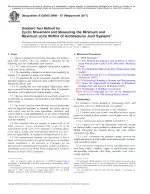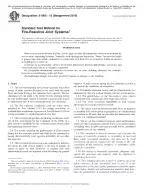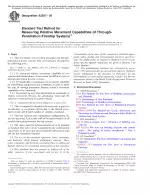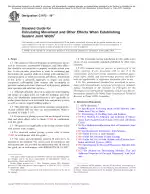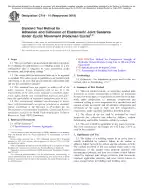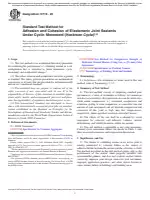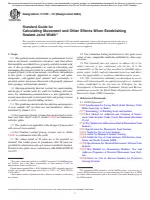ASTM E1399/E1399M-97 (R2017) PDF Download
Standard ENStandard Test Method for Cyclic Movement and Measuring the Minimum and Maximum Joint Widths of Architectural Joint Systems
Also Known As:
ASTM E1399/E1399M-97 (R2017) outlines the procedures for testing architectural joint systems. This standard includes various types of joint systems, such as metallic systems, compression seals (with and without frames), strip seals, preformed sealant systems (with and without frames), preformed foams and sponges (self-expanding and non-expanding), fire barriers (used as joint systems or as a part of the joint system), and elastomeric membrane systems (with or without nosing materials).
The purpose of this test method is to verify the performance characteristics of architectural joint systems, specifically the maximum joint width, minimum joint width, and movement capability. By subjecting representative specimens of these joint systems to common test conditions, users, producers, building officials, code authorities, and others can assess their performance.
It is important to note that this test method only compares similar architectural joint systems within the same subsection. It does not accurately reflect the system's application or provide information on factors such as durability under actual service conditions, loading capability, shear capabilities, fire resistance, wear resistance, chemical resistance, air infiltration, watertightness, substrate compatibility, and other attributes of the specimen.
Therefore, ASTM E1399/E1399M-97 (R2017) should be used as one element in the selection of an architectural joint system for a specific application. It is not intended to be used as an independent pass/fail acceptance procedure. Other test methods should be employed to evaluate factors such as durability, structural loading, and compatibility in conjunction with this test method.
| ICS Codes | 91.080.40 - Concrete structures |
| Language(s) | English |
| File Size | 92.2 KB |

